Thu, 23 Oct 2014 . Last updated Thu, 25 Jun 2015 08:53

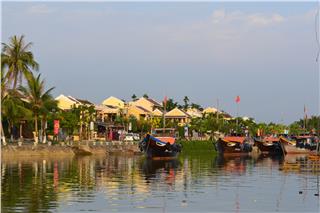
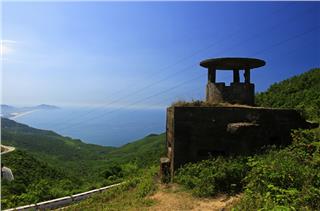
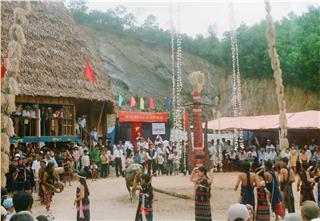
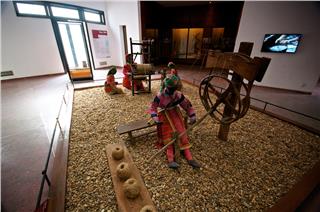
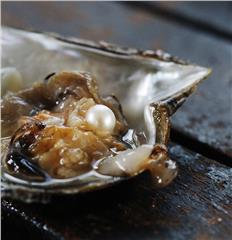


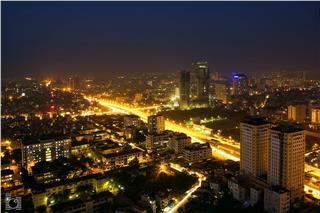
Visit to Saigon, we will explore typical architectural works associated with t he Four Riches Men in Saigon during the late 19th century – early 20th century including Sy, the first, Phuong, the second; Xuong, the third and Hoa, the fourth to learn about the imprints of time here in Saigon.
I’m in a Roman church at the corner of Ton That Tung Street and Nguyen Trai Street. It was buit from the late 19th century to the early 20th century, over 100 years ago. The church was first called Cho Dui Church but later, its name was changed into Huyen Sy to pay tribute the man who used 1/7 of his property to build it – Nhat Sy or Le Phat Dat, one of the Four Richest Men in Saigon.
According to scholar Vuong Hong Sen, Huyen Sy’s real name is Le Phat Dat (1841 - 1900). When a boy, he was called Sy. Huyen Sy was born in Cau Kho (Saigon) into a Catholic family but his home village was in Tan An (Long An). He was sent to Malaysia to learn such languages as Latin, French, Chinese and Quoc Ngu (Romanized Vietnamese). Because his teacher had the same name as his, he had to change his name into Dat. He was appointed an interpreter cum secretary of service in Tan An for many years.
According to “Sai Gon Xua” (Saigon in the past) by Vuong Hong Sen, Le Phat Dat got rich by “a stroke of good luck”. It was said that French colonists sold fields at low price but no one had money to buy. So, they forced Sy to buy their lands. The local officer had no choice but borrowing money to buy the fields. Luckily, his rice fields enjoyed bumper crops for several consecutive years and he got rich. There is a pair of parallel sentences in his house that adv ices his descendants to practice thrift to be financially stable and treat others with respect.
The church was built during 1902-1905 possible through the care of Le Phat Thanh - Le Phat Dat’s son. However, Le Phat Thanh did this to fulfill his father’s wish and used his father’s money for the construction. That’s why the church was named after Huyen Sy to express gratitude to him. The elaborate decorated interior of the church can amaze anyone. Colorful crystal windows of the church make the space even more elegant. Objects imbued with Western culture and sophisticated sculptures create a sacred hall. The bell tower of Huyen Sy Church is 57m high. The 4 bells were cast in France and brought here. When being stricken, they produce melodious sounds that echo far and wide.
Huyen Sy – Le Phat Dat died in 1900. His wife – Huynh Thi Tai passed away 2 years later. Their dead bodies were buried in a charnel house behind the church. The statues of his son – Le Phat Thanh and his daughter-in-law Do Thi Thao are inside. Le Phat Dat’s marble statue is erected on his tomb, facing the nave of the church. It can be considered a lively work of art with sophisticated details. Le Phat Dat’s clan belonged to the “blue blood” then. Most of his children were wealthy and powerful landlords. He was maternal grandfather of Nguyen Huu Thi Lan or Nam Phuong Queen, King Bao Dai’s wife.
Only a few architectural works in Saigon that are closely associated with Do Huu Phuong can be found today. This school is the most popular. Do Huu Phuong was born in 1841 in Cho Dui (Saigon). Introduced by a provincial official, he became a collaborator for French colonists after they took over Ky Hoa in 1861. Do Huu Phuong got his promotion and was rewarded with a lot of land from the French. As recorded, Do Huu Phuong could earn such enormous fortune because he had a resourceful and talented wife. She funded the construction of Ao Tim (Gia Long) school which is today’s Nguyen Thi Minh Khai school.
The past full of nobility seems to come back here. This extremely valuable architectural work has been severely damaged by time and thus, we can only see a part of it here. The tomb and the stele with the names of members of Do Huu clan are the clearest evidences for the origin of the architectural work. Four pillars in the center of the worshipping house are the most precious traces here. Elaborately carved and sculptures details with characters written with gold powder prove the wealthiness of Provincial Chief Do Huu Phuong. All visitors to the worshipping house feel sorry for the majestic architectural work in the past and find themselves filled with compassion for the glorious past of a wealthy man.
This used to be the most luxurious edifice in Saigon – Cholon in the past. It belonged to Ba Ho Xuong whose real name was Ly Tuong Quan. He was a Chinese expatriate in Vietnam. Because of his loyalty of the Ming Dynasty, Ly Tuong Quan refused to live under the power of the Qing Dynasty and moved to the South of Vietnam. The life and career of this figure are mainly found in anecdotes.
Ly Tuong Quan was Catholic and his Vietnamese name was Xuong. And he attended an interpretation school he was excellent in both French and Chinese and thus, appreciated by the French then. Although he earned both money and social status while working as an interpreter, most of his wealth came from his business. After becoming quite popular, he decided to run a business as a food provider to serve people in Saigon and nearby provinces. His business went so plain sailing that soon after that he became a rich man.
Ba Ho Xuong - Ly Tuong Quan’s house was built 130 years ago. Its architectural and sculptural works inside are found intact until today. His descendants took good care of the house and made it the worshipping house of Ly clan. This imposing house won “Ho Chi Minh City cultural heritage” certificate in 2009. The main hall of the house remains unchanged today. It was where Ly Tuong Quan received his guests of honor or organized important events of the family. The main door was only opened during events or worshipping rituals.
As recorded in the book of history, there was a sarcophagus mode of blue stone in the middle of the charnel house whose design was excellent combination of Gothic and Asian architecture. Despite its modest scale, the charnel house has subtle decorating patterns imbued with Western culture. Next to Ly Tuong Quan’s tomb is that of his wife.
Chu Hoa funded the construction of such architectural works as HCMC Fine Arts Museum, Tu Du hospital, Saigon First Aid Center, Government Guest House and a lot of banks and shopping malls in Saigon. And this Hotel Majestic Saigon is included, of course. Hotel Majestic Saigon has welcomed so many famous figures from different countries in the world. British witer Graham Greene, the author of “The Quiet American” which was made into a movie by Phillip Noyce, stayed here in his visit to Vietnam. Kaiko Takeshi – a famous Japanese writer and journalist came here in 1964 and 1965. Well-known French actress Catherine Deneuve, who had a role in “Indochine” in 1993 also stayed in this hotel. The hotel welcomed Prince Andrew in March 1999 and its most recent famous guest was the President of Bulgaria in 2013.
Let’s come back to the story of Chu Hoa, the first owner of the hotel. As written many documents, Chu Hoa – Hui Bon Hoa launched his business in trading wasted materials. As told in anecdote being considered the most solid evidence, the French sold off 20.000 used transmitters. Chu Hoa borrowed money to buy these machines and used his experience in separating gold from the machines to get a large amount of gold. Thanks to that capital and inborn business talent, he could make a big fortune.
Both the interior and exterior of the hotel has gone through a lot of renovation. However, this staircase has almost no change at all. This is the highest place in the hotel where we can enjoy really cool wind. As the hotel faces Bach Dang wharf, we can get the view of the whole Saigon river. Coming here, we can see the financial power if Chu Hoa – Huynh Van Hoa who owned the first-class luxurious hotel in Saigon. This is the edifice of Chu Hoa’s family. It has harmonious combination of European and Asian architectural style. Located in the center of District 1, Saigon, the architectural work now becomes HCMC Fine Arts Museum.
Chu Hoa and his family used to live here. The house still keeps its ancient beauty today. As written by Vuong Huong Sen in “Sai Gon xua” (Saigon in the past), “Hui Bon Hoa’s children got on so well with each other. They didn’t share their father’s assets and just used the interest. When someone needed a big sum of money to carry out an important thing, he had to ask for the permission of the eldest brother. So doing, Hui Bon Hoa’s monumental treasure was preserved well over time”.
There’s a special statue here. It’s a bronze statue of Quach Dam, the founder of Binh Tay market. There was another “top 4 richest men” in Cholon area, including Hoa, the first; Dam, the second; Xuong, the third and Dinh, the fourth. Located of this area may not forget Quach Dam, the one who donted money for the construction of Binh Tay market. Quach Dam had a tough childhood and he earned his living as a junk-dealer like Chu Hoa. After Quach Dam had saved a sum of money, he started his business and later became a leading rice provider in Saigon-Cholon. Durinh the early 1920s, the then authorities of Saigon intended to move the old and packed Cholon area to a new place. However, they failed to find a suitable location for it.
Quach Dam wanted to give them part of his land and funded the construction of a new and larger market if he had the land for building his two streets along the two sides of the market and a copper statue him placed in front of the market. His requests were approved and Binh Tay market was built in 1928. Binh Tay market is one of the busy trading centers with important contribution to the development of Saigon – Cholon today. Goods from this market are brought to different areas. As one of the popular central markets in Saion, Binh Tay market has a range of products. You can find almost everything you need here. The market is always overcrowded with buyers and sellers. Foreign tourists also come here to explore its cultural and historical values.
Saigon with well-known anecdotes has left unique impression on people via traces of time. The city now completely deserves the title of the cultural and economic hub of Vietnam.
Source: VTC10 - NETVIET

 Đặt vé máy bay cho người Việt?
Bấm vào đây
Đặt vé máy bay cho người Việt?
Bấm vào đây
Our service uses cookies for technical, analytical and marketing purposes. See our Cookie và Privacy policies for more information. If you agree to this, just keep browsing.


